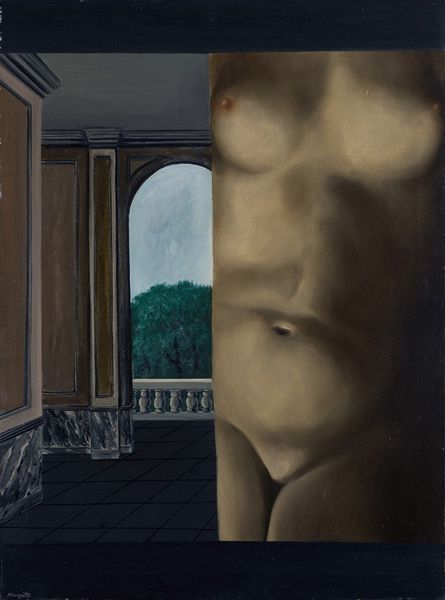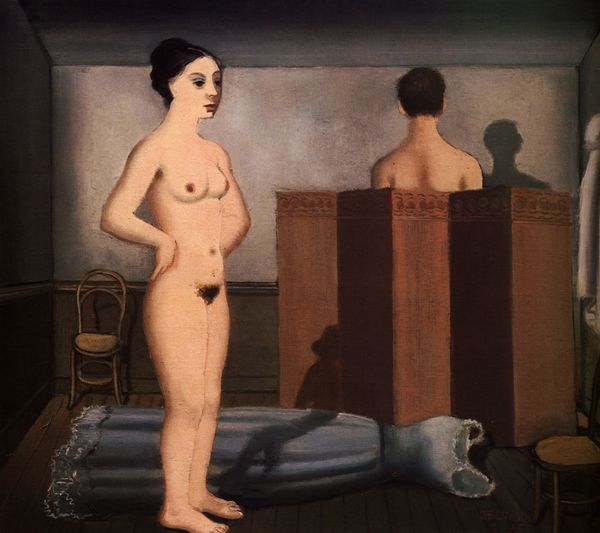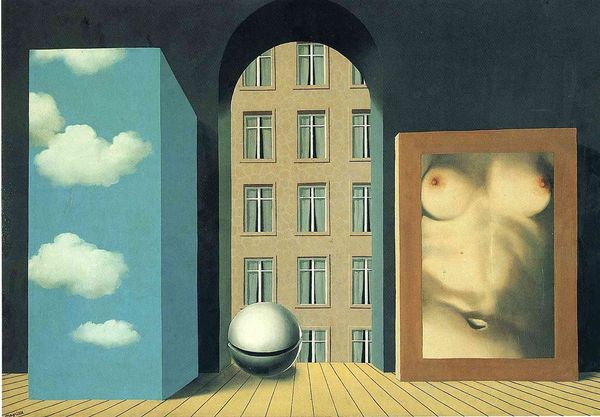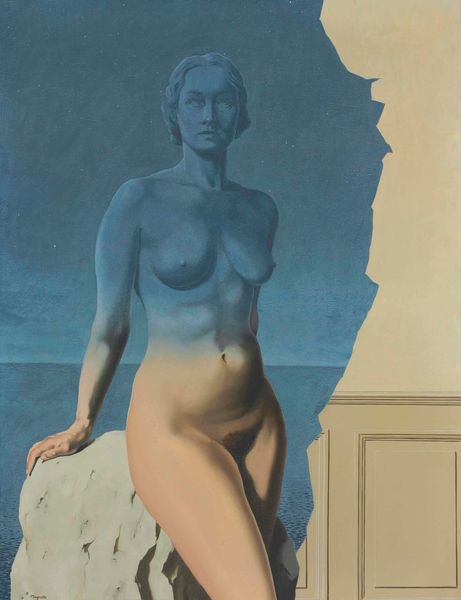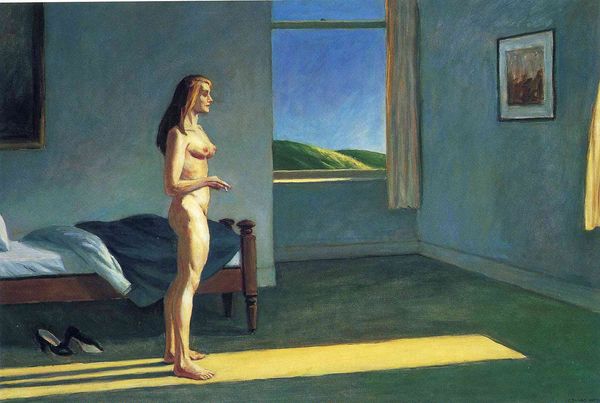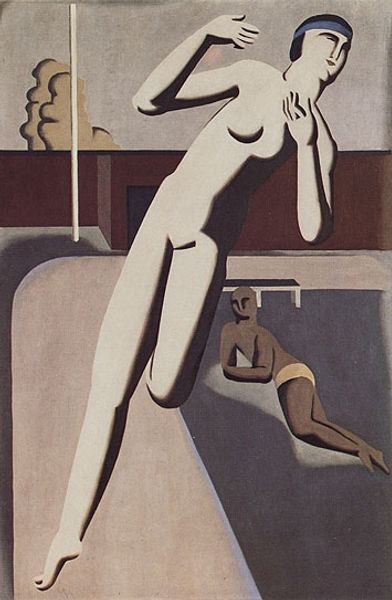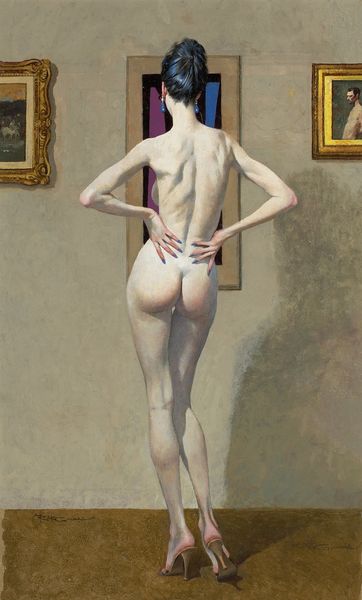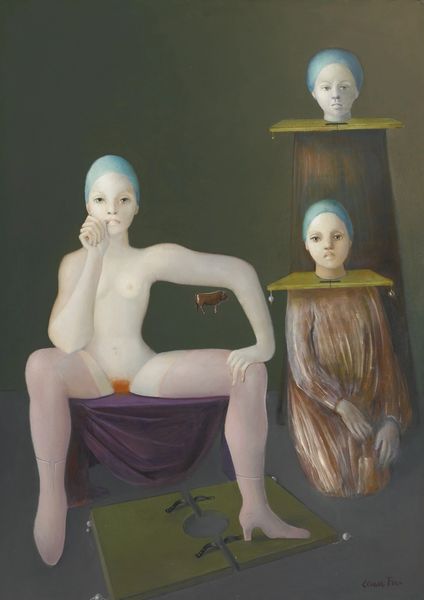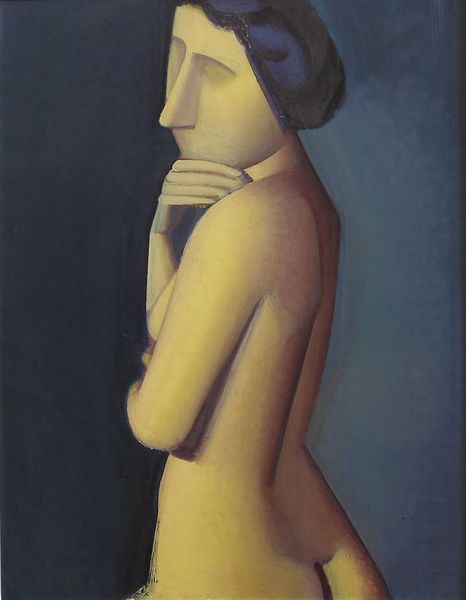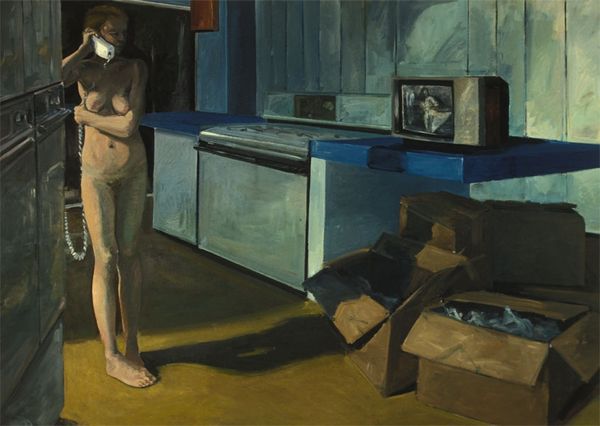
sculpture
#
cool toned green
#
physical art
#
green tone
#
sculptural image
#
spray can art
#
industrial style
#
underpainting
#
sculpture
#
muted green
#
green and neutral
#
3d art
Copyright: A.C.Fine Art Inc.
Curator: Let's turn our attention to "Nude and Dummy," painted by Alex Colville in 1950. It's a tempera on board depicting a female nude facing away from us, gazing out a window, with a dressmaker's dummy looming in the foreground. Editor: Well, my first thought is how cold the whole scene feels! It's got that slightly menacing Edward Hopper vibe, but colder somehow. A stark interior, a figure almost cornered... the muted greens and blues certainly don’t help. Curator: It’s interesting you pick up on that sense of isolation. Colville's work often reflects anxieties of the postwar era, a certain detachment even within domestic settings. Consider the use of the dummy itself, a stand-in for human presence, yet utterly devoid of life. Editor: Right! Like a ghostly roommate you can't quite shake. The dressmaker’s form mirrors, yet also parodies, the living figure in the composition. Both are literally bare, vulnerable to the scrutiny of the gaze, be it external or internal. Is it a reflection on objectification, or simply the artist searching for some symmetry? Curator: That tension is key, I think. The work challenges conventional notions of beauty and the female form. And don’t forget the geometric starkness of the setting. The bare attic room and the angled ceiling emphasize a psychological unease. Editor: I find the distant view through the window unsettling. Is that farmland? A strange pyramidal structure seems imposed onto the scene. Nature tamed, almost weaponized by the geometrical shape and, also maybe to show a link between geometry and the figure? I do love the underpainting! Curator: It hints at a world beyond this claustrophobic interior, yet it offers no real escape. In many ways, it symbolizes a tension between freedom and constraint, internal and external pressures – which can perhaps be reflected in Canadian art in this era. Editor: Exactly! "Constraint," you said it! It almost feels like both figures—real or not—are performing for an audience that might not even be there. That silent observation adds another layer of discomfort, yet the quality of observation from both of their parts in that frozen-in-time stage, are the qualities of the best drama... Curator: Ultimately, "Nude and Dummy" prompts us to question our assumptions about representation, identity, and the relationship between ourselves and the spaces we inhabit. Editor: I will take some time to absorb the implications of "ourselves and the spaces we inhabit," in a painting so barren and full of suggestion, at the same time.
Comments
No comments
Be the first to comment and join the conversation on the ultimate creative platform.
